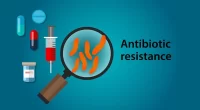Long COVID: Study Uncovers Immune Dysregulation in Patients – Long COVID, also known as Post-Acute Sequelae of COVID-19 (PASC), is a condition that affects some people who have had COVID-19, even those with mild initial infections. People with Long COVID experience a wide range of symptoms that can last for weeks, months, or even years after the initial infection.
The specter of long COVID continues to loom large, casting a shadow over recovery for many who have battled the initial storm of SARS-CoV-2 infection. While vaccines have blunted the pandemic’s sharpest spikes, this post-acute sequelae of COVID-19, with its constellation of persistent symptoms like fatigue, muscle aches, and breathlessness, persists as a significant source of medical and societal concern. Understanding the underlying mechanisms driving these debilitating symptoms is crucial for developing effective treatments and offering relief to millions.
A recent study published in Nature Immunology takes a critical step towards cracking this complex puzzle. Led by a team of dedicated researchers, the study delves deep into the immune system, seeking answers amidst the tangled web of responses triggered by SARS-CoV-2. They compared the immune profiles of individuals suffering from long COVID with those who had fully recovered, employing sophisticated tools like cytometry, serology, and RNA sequencing to peer into the microscopic battlefield where the war against the virus plays out.
One of the study’s most striking findings paints a stark picture of a dysregulated immune system in long COVID patients. Unlike their completely recovered counterparts, their T cells – the foot soldiers of the immune response – exhibit a disrupted distribution, hinting at an ongoing struggle against the virus’s lingering traces. This disarray extends to the specialized ranks of cytotoxic T cells, the frontline warriors who directly eliminate infected cells. In long COVID patients, these crucial troops are significantly depleted, leaving the battlefield understaffed and vulnerable to persistent viral remnants.
But the story doesn’t end there. The study reveals a fascinating paradox: while cytotoxic T cells fall in number, the levels of antibodies against SARS-CoV-2 soar in long COVID patients. This imbalance further fuels the confusion, suggesting a miscommunication between the two arms of the immune system – the humoral (antibody-mediated) and cellular (T cell-driven) arms. This discordant symphony could be the maestro behind the chronic inflammation and immune dysregulation that characterizes long COVID, perpetuating the debilitating symptoms experienced by patients.
Interestingly, the study also unveils a nuanced interplay between sex and immune response. Female long COVID patients displayed distinct patterns, with lower numbers of naive T cells, the fresh recruits essential for a robust immune response, and higher levels of terminally differentiated T cells, veterans scarred by past battles. This suggests that sex hormones might subtly influence the immune landscape, offering another piece in the intricate puzzle of long COVID.
Key findings:
- Long COVID patients displayed immune dysregulation and systemic inflammation compared to recovered individuals.
- Their T cell distribution differed, suggesting ongoing immune responses.
- They had fewer anti-SARS-CoV-2 cytotoxic T cells (CD8+) and mis-coordinated B and T cell responses against the virus.
- They had higher levels of anti-SARS-CoV-2 antibodies and CD4+ T cells poised to migrate to inflamed tissues.
- Sex-specific differences emerged, with women with long COVID showing lower naive T cell numbers and higher levels of terminally differentiated T cells.
- Overall, the study revealed significant gene expression changes in T cells, B cells, and monocytes in long COVID patients, impacting both general and SARS-CoV-2-specific immune responses.
In conclusion, these findings suggest that immune alterations in T cells and other immune cells contribute to the diverse and persistent symptoms of long COVID. Miscommunication between B and T cells (cellular and humoral adaptive immunity) might underlie the inflammation, immune dysregulation, and clinical features of the condition. Study source
ALSO READ: COVID-19 Patients with New Atrial Fibrillation Face Higher Mortality Risk









